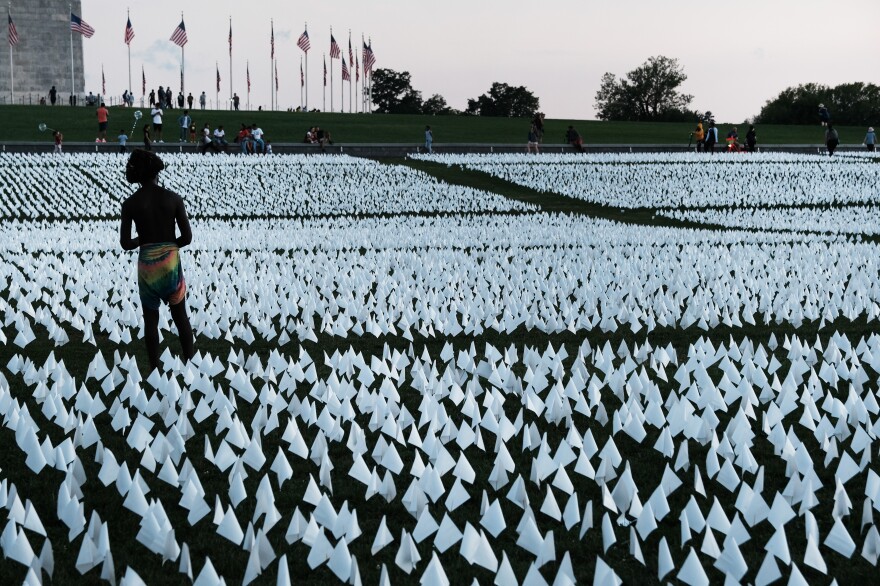Life expectancy in the U.S. fell in 2021, for the second year in a row. It was the first time life expectancy dropped two years in a row in 100 years.
In 2019, someone born in the U.S. had a life expectancy of 79 years. In 202o, because of the pandemic, that dropped to 77 years. In 2021 life-span dropped again — to 76.1 years. And for some Americans, life expectancy is even lower, according to a provisional analysis from the Centers for Disease Control and Prevention.
"The results of this study are very disturbing," says Dr. Steven Woolf, a professor of population health and health equity at Virginia Commonwealth University. "This shows that U.S. life expectancy in 2021 was even lower than in 2020," he says.
Other high-income countries have seen a rebound in life expectancy, which Woolf says makes the U.S. results "all the more tragic."
One of the most dramatic drops in life expectancy in 2021 was among American Indian and Alaska Native people.
Between 2019 and 2021, the life expectancy for this population fell by 6.6 years, to 65.2.
"That's horrific," Woolf says. "The losses in the Native American population have been terrible during the COVID-19 pandemic. And it reflects a lot of barriers that tribal communities face in getting access to care," he says.
Life expectancy for this community is now the same as it was for the whole population in the 1940s, says Elizabeth Aria of the CDC's National Center for Health Statistics who was the lead author of the report.
"To see the decline over the two-year period for this population was 6.6 years was jarring," Aria says.
Despite a high vaccine uptake in this community, American Indians are 2.2 times more likely to die from COVID-19 and 3.2 times more likely to be hospitalized for the virus, says Chandos Culleen, director of federal relations for the National Council of Urban Indian Health. When you see these numbers "it breaks your heart," he says.
White Americans also saw a larger decrease in life expectancy in 2021 than Black and Hispanic Americans. This was the reverse of what happened in 2020 when Hispanic Americans saw a 4 year decline and Black Americans saw a 3 year drop. Life expectancy for white Americans declined by a year in 2021 to 76.4. Black Americans saw a 0.7 year decline to 70.8 years, Hispanic Americans saw a 0.2 year decline to 77.7 years. Asian Americans saw a 0.1 year decline to 83.5 years.
Woolf says the greater drop in life expectancy for white Americans could reflect attitudes in some parts of the country to vaccines and pandemic control measures. The U.S. health care system is fragmented he points out — public health is determined by the states, which means there were 50 different pandemic response plans. The states which were more relaxed about COVID restrictions and have lower vaccination rates saw higher excess deaths during the delta and omicron surges than states which had more aggressive vaccination campaigns, masking and other mitigation requirements.
Death rates from COVID-19 in counties that went heavily for Donald Trump saw higher death rates than counties that favored President Biden, according to an NPR analysis.
Injuries, heart disease, chronic liver disease and cirrhosis and suicide also contributed to the life expectancy decline. Increases in unintentional injuries in 2021 were largely driven by drug overdose deaths which increased during the pandemic.
"To have this second year crash basically wiping out the meager gains made during this century is really pretty shocking," says John Haaga, a retired division director of the National Institute on Aging.
The U.S. has been lagging for years in making improvements in things like heart disease — the country's number one killer — and the life expectancy gap between the U.S. and other countries has been growing for decades, Haaga says.
"A lot of much poorer countries do much better than us in life expectancy," he says. "It's not genetics, it's that we have been falling behind for 50 years."
Copyright 2022 NPR. To see more, visit https://www.npr.org.





